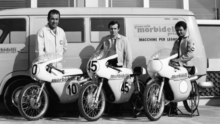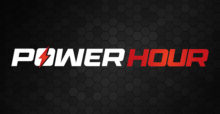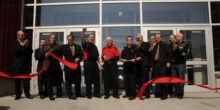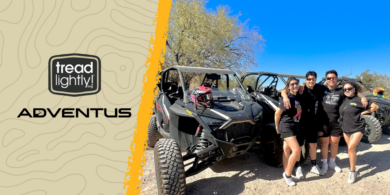E-newsletter 101: Drive showroom traffic
With the right content, email can increase sales prospects
If you’re a loyal customer of any retailers, there’s a good chance you’ve signed up for their e-newsletter, and if you’re a savvy business owner, there’s a similar chance that you’re deploying one yourself.
As more consumers are spending large chunks of their time online through a computer, tablet or smartphone, e-newsletters have become popular avenues for marketing. But just because many businesses are deploying an e-newsletter doesn’t mean they’re doing it right.
Simple strategies can turn a dealership’s e-newsletter from a boring, unread email to a traffic-generating machine.
“The whole idea of these things is ‘How do I hopefully get these guys in the showroom?’” said Derrick Brown, director of sales for Dealer Spike. “It’s just about getting that opportunity to talk to someone, get them in the showroom to sell them something.”
Each newsletter should have a focus, said Laura Reinders, marketing manager for PowerSports Network. Some might inform customers about an upcoming event, others might offer a maintenance tip, while some might showcase new models. Most important is to provide value to customers.
“The newsletter shouldn’t be a kitchen sink, where you just throw everything in,” she said.
Each newsletter should have a focal point, with a few secondary items. Jay Mason, president of Dealer Spike, recommends dealers hit on new and pre-owned units, service and P&A specials and maybe an event in each newsletter. Dealerships should also make sure to list their name and contact information.
“Definitely all their social media links, a link to the website, their name and phone number prominently, even an 800 number, the ability to send to a friend,” Mason advised.
Provide a call to action
As many items as possible should have a clear call to action, such as attending an event, calling the sales department, stopping at the dealership, liking a Facebook page or clicking a link. Web links should go directly to the page mentioned, when possible, even if it’s to a specific unit page.
“It’s more targeted response,” Mason explained. “You don’t want to just drop them on the homepage of your website if they’re looking to book a service appointment. You don’t want to just drop them on new bikes if they’re looking for pre-owned.”
To get a customer’s attention among the noise of other emails, Reinders says dealers should use intriguing subject lines, such as those that ask a question or mention special pricing.
“That’s the very first thing. It’s going to get a customer to open your newsletter,” she said.
Recurring newsletter features, such as a bike of the month or weekly tips, may lead customers to develop a habit of always opening the email.
Images inside can attract customers’ attention, so dealers should use visuals whenever possible. However, visuals should also be accompanied with text, so customers who can’t see the photos still understand the message of the email.
“A lot of dealers create or will take a PDF of an event flier and shrink the size to their newsletter. It looks really nice, but it doesn’t really work the best if people don’t have their images displayed,” Reinders explained.
The frequency of e-newsletters can also have a big impact on whether customers read them or not. Dealers must balance keeping their brand top of mind versus the frequency of deployment. Reinders says e-newsletters can be sent weekly, while Dealer Spike reports twice monthly will suffice. However, both agree that dealers should keep a close eye on how many people are unsubscribing if they plan on increasing the number of newsletters sent.
“Watch your opt-out rates. If your opt-out rates are high, that means you’re doing something wrong,” Brown said.
Other than opt-outs, dealers can track bounce backs, click-throughs and open rates to determine their e-newsletter ROI. Reinders says a 30 percent open rate is exceptionally good. Trackable links also allow dealers to follow where customers are going from the e-newsletter. Reinders said dealers can also poll their customers as to how they heard about specials or events, or invite them directly to a Facebook event and view the RSVPs. Services such as Dealer Spike’s also allow dealers to see specifically which customers clicked on which links, making it easy to follow-up with those who didn’t go through with a purchase.
Vary your strategy
If the open and click-through rates aren’t what dealerships are looking for, they can try changing different parts of the e-newsletter, from the subject line to the content to the links and see what works best.
“You definitely want to experiment with new strategies, even giveaways,” Mason said.
Both Dealer Spike and PSN advise dealerships to create their own organic email lists, rather than buy a list, because it allows the stores to market to their core audience and prevents potential customers from feeling overwhelmed with unwanted news.
“With newsletters, you’re communicating to people that have indicated that they’re interested in your dealership because they’ve given you their email address,” Reinders said. “I think it’s a very effective way to market.”
E-newsletters, as many dealerships have found, are an important marketing tool in that they’re relatively inexpensive and directed at consumers who have already shown interest in powersports and a particular dealership. With the help of a number of resources in the industry, they’re easy to start and maintain.
As Mason explains it, e-newsletters are a key component to keeping sales alive in this digital world.
“The most successful dealers are definitely using this on a month-in and month-out basis, and the dealers who aren’t using these e-newsletters are leaving themselves vulnerable to their competitors.”








